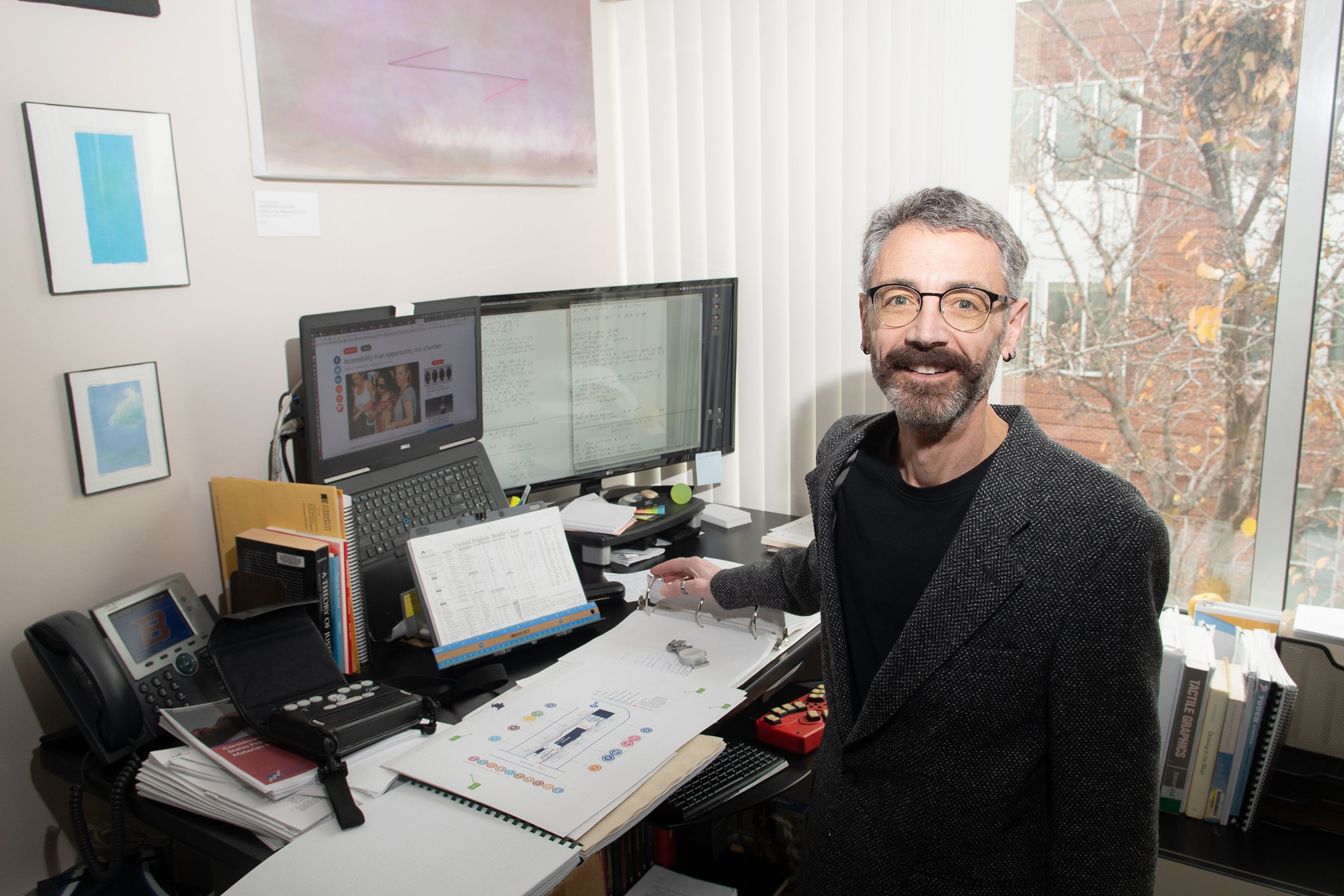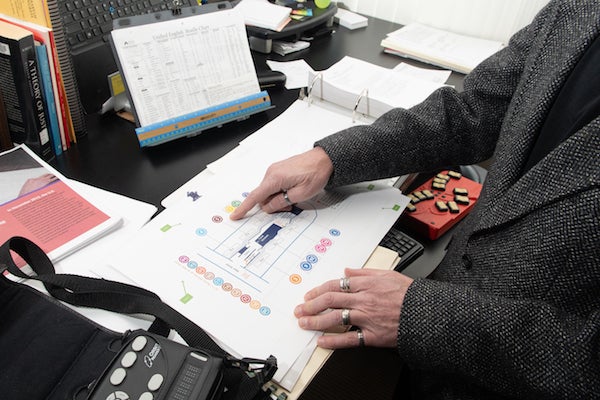
The classes Don Winiecki teaches in the computer science department help students identify bias in technology – facial recognition software that misidentifies women and people of color, or the recent example of a health care algorithm that was found to have a significant racial bias when determining which patients should receive additional care.
Technology has these flaws because the scientists who created and refined it based it on themselves and on their own experiences, said Winiecki, a professor of ethics and morality in professional practice in the College of Engineering. This extends to technology meant to aid people who are blind or visually impaired.
“A lot of our braille translation devices are created by sighted individuals who never knew what it was like to encounter a word that makes no sense in braille,” said Winiecki. He works closely with the braille community, he said, so that as a sighted person, he can avoid some of those pitfalls.
Winiecki is involved in several projects to increase the availability and quality of educational materials for readers of braille. His drive is personal. Some years ago, his mother experienced macular degeneration. He has similar physical conditions and anticipates that one day he, too, may lose his eyesight.
“I can’t imagine not being able to read,” he said – his office is lined with bookshelves and the landscapes he paints. “I decided to find a way to contribute to a literary world that I want to live in.”
In 2016, while on sabbatical leave from Boise State, Winiecki became a braille transcriber and proofreader certified by the U.S. Library of Congress. He’s not yet certified to transcribe braille math and music (that’s in progress), but already is transcribing music in braille for church groups and math for students studying STEM subjects who face “lots of prejudgement” he said, from people who incorrectly assume they cannot succeed in STEM fields. His advocacy has included working with the Science and Engineering Division of the National Federation of the Blind, interviewing STEM professionals and students to identify the factors in higher education that help or impede learning.
Winiecki is a member of the National Braille Association (NBA) that provides continuing education for people who prepare braille and braille materials for schools, educators and others. As a member of the organization’s tactile graphic committee, his tasks have included translating the waveform of electronic signals on an oscilloscope into a tactile graphic form for users who are blind. He also is designing webinars on accessible STEM graphics for NBA members.

“Don is a visionary,” said Saul Garza, the tactile graphics committee chair at the NBA who lives in Cincinnati, Ohio. “He can determine whether something is going to be an asset to our readers or not. He’s not afraid of work and has always stepped up to the plate. This is a voluntary position, mind you. His work comes from pure passion.”
Much of what Winiecki does is on a volunteer basis. He founded a nonprofit, Handid – “because my hands did everything,” he quipped – to support and promote his braille projects. Those have taken him around the country and around the world. For several years he has partnered with Dot, a company in Seoul, South Korea, that invented a sleek braille wristwatch that features a refreshable display offering a stopwatch, caller I.D., texting, connection to calendar apps and more.
“My work with them is to come up with a system of rules they can use to convert something like a google map into a tactile form so that a person who is blind could walk down a street and follow themselves on a map, something the size of a Kindle, that constantly refreshes,” Winiecki said.
The challenge is ongoing. He travels to Korea once or twice a year to meet with engineers there.
He also worked with an anthropologist in Baltimore who was assembling a tactile museum exhibition of 3D-printed stone points or arrowheads. The stone points are attached to a lanyard with a QR code. Museum visitors can use their cell phones to connect to recorded text or link to their portable devices that translate interpretive material into braille. Closer to home, Winiecki has worked with the Idaho Commission for the Blind and Visually Impaired. He and Alison Steven, the commission’s transition coordinator in its rehabilitation division, have met with the Discovery Center and local parks officials to share ideas about making those spaces more accessible. Steven said whenever accessibility issues come up or she wants to discuss the latest developments in braille or tactile resources, or she needs something transcribed into braille quickly and well, she calls on Winiecki.
“To me, he is an invaluable resource. He’s so responsive, has so much energy and a positive outlook. I think the more he does, the more people will recognize that,” she said.
She recalled the time Winiecki trained with the commission for a few weeks using a cane and sleep shades to block his vision so that he could better understand the senses people rely on when they don’t have sight – another example of his thorough research, said Steven.
Winiecki is sharing his expertise in tactile mapping with Valley Regional Transit for signage at its Main Street Station, and the Wassmuth Center for Human Rights to translate some of its educational materials into braille.
“I’m a sociologist. Before that a technologist. Before that, I worked in corporate marketing where I did tech documentation for industry and the military. I’ve never not been face to face with technology, nor with the people who wrestle with technology,” said Winiecki. “Now is my chance to help build into technology the morals that should have been there all along.”
– Story by Anna Webb